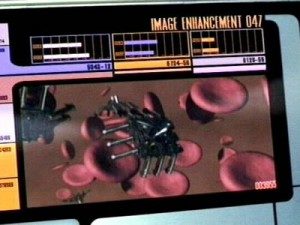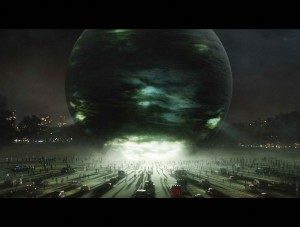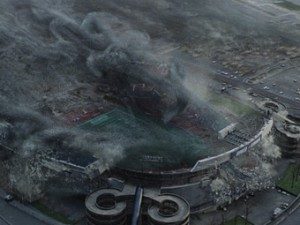 It starts small, and innocent. A technological marvel is presented to the world, it promises to revolutionise the very fabric of our lives. A nanotechnology that will serve to protect us from environmental and even medical threats, will build better materials more efficiently and with lower cost, and will create benefits in nearly every aspect of human life…in theory.
It starts small, and innocent. A technological marvel is presented to the world, it promises to revolutionise the very fabric of our lives. A nanotechnology that will serve to protect us from environmental and even medical threats, will build better materials more efficiently and with lower cost, and will create benefits in nearly every aspect of human life…in theory.
But things don’t go smoothly in practice; self-replicating nano-bots seemed like a good idea on paper, but a slight programming error causes the little soldiers to replicate out of control, consuming resources in that effort, eventually decimating the face of the Earth.
Seems like the plot to a halfway decent made-for-TV movie one might watch at 2:00am, but what if I told you that the above is a scenario that has been given an undue amount of attention, scientifically?
The above is actually the premise behind the idea known as Grey Goo. Also called ecophagy (“eating the environment”),  this is a little known end-of-the-world scenario involving molecular nanotechnology in which out-of-control self-replicating robots consume all matter on Earth while building more of themselves.
this is a little known end-of-the-world scenario involving molecular nanotechnology in which out-of-control self-replicating robots consume all matter on Earth while building more of themselves.
The idea comes from American engineer and nanotechnology expert K. Eric Drexler, who coined the phrase Grey Goo in his book Engines of Creation (1986).
“Early assembler-based replicators could beat the most advanced modern organisms. ‘Plants’ with ‘leaves’ no more efficient than today’s solar cells could out-compete real plants, crowding the biosphere with an inedible foliage. Tough, omnivorous ‘bacteria’ could out-compete real bacteria: they could spread like blowing pollen, replicate swiftly, and reduce the biosphere to dust in a matter of days. Dangerous replicators could easily be too tough, small, and rapidly spreading to stop — at least if we made no preparation. We have trouble enough controlling viruses and fruit flies.”[1]
Believe it or not, the idea of Grey Goo, a term that describes the after-effects of molecular nanotechnology, is one that holds a good deal of scientific credence…it’s a real thing!
 While Drexler admits that the exponential growth of such technology would be limited by the availability of resources needed for self-replication, this is hollow sucker for the rest of us. A doomsdays scenario reminiscent of the mechanism of destruction portrayed in the 2008 remake of The Day The Earth Stood Still staring Jennifer Connelly and Keanu Reeves seems especially frightening considering the speed with which it could happen –Drexler says a runaway Grey Goo situation could consume the surface of the Earth in a few days- and the relentless nature of that particular foe is no comfort either.
While Drexler admits that the exponential growth of such technology would be limited by the availability of resources needed for self-replication, this is hollow sucker for the rest of us. A doomsdays scenario reminiscent of the mechanism of destruction portrayed in the 2008 remake of The Day The Earth Stood Still staring Jennifer Connelly and Keanu Reeves seems especially frightening considering the speed with which it could happen –Drexler says a runaway Grey Goo situation could consume the surface of the Earth in a few days- and the relentless nature of that particular foe is no comfort either.
In the face of this potential horror, Drexler admits that the likelihood of such technology coming to the fore is slim to none, as self-replicating machines are needlessly complicated and inefficient. But let’s not let our guard down, lest we find ourselves at the mercy of some Dr. Evil type character with a handful of nano-bots at his command.
One might question the need to even think of such scenarios and but “Grey goo is a useful construct for considering low probability, high impact outcomes from emerging technologies. Thus, it is a useful tool in the ethics of technology.”[2]
Case in point, a History Channel broadcast presented a similar idea with a futuristic doomsday scenario:
“In a common practice, billions of nano-bots are released to clean up an oil spill off the coast of Louisiana. However, due to a programming error, the nano-bots devour all carbon based objects, instead of just the hydrocarbons of the oil. The nano-bots destroy everything, all the while, replicating themselves. Within days, the planet is turned to dust.”
So now that you’ve got the heebie jeebies thinking about these little robots –I imagine millions of little Bender (Futurama) type bots with a horny obsession for eating carbon- I’ll leave you with this final thought: while this technology doesn’t currently exist and likely will not exist in any form for legitimate scientific purposes, nothing is stopping more nefarious people or groups from developing molecular nanotechnology for terroristic means.
